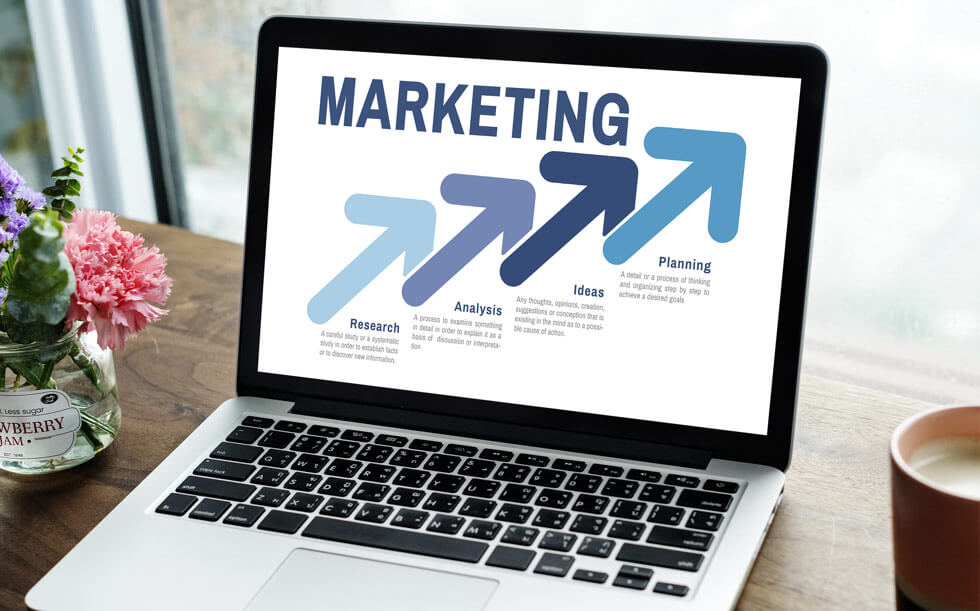Whether your site uses a CMS or is hand coded, websites take time to create, and they need content. From photos to bios, and copy to logos – a website is simply a blank page without content.
Over the years, the way websites are used and how they look has changed dramatically. In the beginning, HTML was used to transfer documents across the web. Later, CSS was created to style these documents and give them a more aesthetic look. Information is the root of the web, and data speeds were snail slow in the beginning, so it makes sense that the original commerce websites were packed with as much text information as possible. All of this text was cluttered, and looked very boring. Fast forward to today where internet speeds just keep getting faster. The amount of data you can present to your viewers is almost limitless (almost). It is no problem to use high resolution photos, videos, audio and animation on your website. You name it, the modern website can handle it. With all these options, what is the best approach for deciding on what kind of content your site needs? And what does your web developer need from you to build you a great looking and engaging website? Let’s take a look.
One of the biggest mistakes newbie web designers and developers make is to try and come up with design and layout ideas without consulting with the client to see what they like/envision. They may come up with a web design and layout without first referencing other sites in a similar industry, and they may have no idea what style of website the client likes. Whether you want to buck the design trends in your industry, or stick strictly to it, your web designer needs to know these trends to accomplish your goals. On your end, the best thing you can do is give your developer some example websites and let them know why you like them. Color, layout, functionality, fonts and content are all things to think of when looking for example sites.
Here is a good place to start:
15 of the Best Homepage Website Designs
The quality and relevance of your content both play a roll in how Search Engines rank your site, and if viewers of your site stay for more than a couple of seconds.
A successful website is one that gives clear information that visitors are looking for and a call to action that encourages your visitors to interact with you through your online shop, email, etc. The goal is for all of your website content to direct visitors to one of these two objectives.
Although you can generate much of the content yourself, we recommend that you pay a professional to create the content for you. Your time is valuable. As professionals, we will not only get it done quickly, we will give it a look and feel that only comes with experience. Did I mention that we will get it done quickly? The number one factor that we have found that delays completion of a website is waiting on clients to make their own content. In order to be efficient, our preferred workflow to generate content is to schedule a meeting, conduct brief interviews, take photos, draft the content for the client’s approval and final edit, and that’s it. We are done. Simple. When it come to the design and look of your website, our preferred workflow is to have you send us 2-3 examples of sites you like, and a description of why you like those certain design elements. We then do a mock up, submit it to you for a final edit, and we are done.
Here is a list of some of content items that developers might need:
- Headshot photos
- Photos of people doing their job
- Interior and exterior building photos
- Product photos
- Customer, client and employee interaction photos
- Bios
- Slogans or taglines
- Copy (description of who you are and what you do, product and service information, calls to action)
- Logos
- Color Scheme
- Font type
- Contact info and location
- Introduction video
- Informational video
Here is a good article on creating great content:
10 Steps to Creating Incredible Website Content
Feedback is the cornerstone of making great websites. From the beginning process of mock ups, to a site that has been up and running for some time, feedback from you, your staff, customers and website analytics is what allows us to refine, tweak and make your website a real asset to your business. Here are some tips on what helps us the most when giving feedback:
- Listen to what your customers and staff have to say about your website. They are often the ones that are engaged and using the site, and the site is there for them.
- Try to look at the big picture as much as possible. Being detail oriented can help make a website look polished and professional, but not before the overall utility and function of the site is met.
- Keep it simple. The overall goal should be to present the information in clear, simple and easy to find elements. I am constantly surprised by business websites that don’t have their location or contact information front and center.
- Don’t be afraid to ask questions and pick our brains. The more educated you are about your website, the better feedback you will be able to give us.
Here is a good article on website feedback:
9 Creative Ways to ask your Website Visitors for Feedback
With a little preparation and planning, websites can be built efficiently and painlessly. (It can actually be kind of fun.)
The important things to take away from this post when working with a web designer are to keep it simple, communicate and don’t spin your wheels doing something you could have a professional do in a tenth of the time (cornerstones for any successful business, really). The internet, in all reality, is barely out of its infancy and the best thing you can do is to set the web based part of your business up to grow with it. A good developer will listen to what you want and make it a reality. A great developer will really listen to you, and then help you achieve the future goals of your businesses on the internet.



Recent Comments